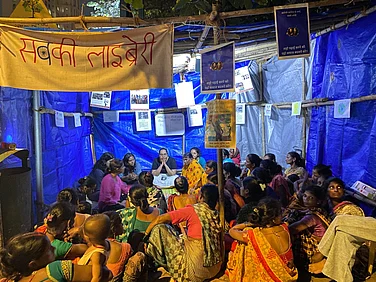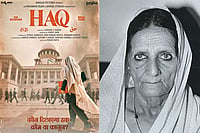Frankenstein (1931): “It’s alive. It’s alive,” screams the eccentric scientist Henry Frankenstein (to reiterate, it’s the creator’s name, not the monster’s), as the fingers of the monster he has created begin to move. “Now I know what it feels to be God,” the scientist exults as his companions try to hold him still. Frankenstein and his assistant Fritz, a hunchback, have scoured grave yards to find body parts of recently hanged criminals. Fritz steals the brain from a laboratory. They stitch together the monster in a watchtower by the sea.

That sets up the spellbinding atmospherics for this B&W film, the lightening and thunder, the lashes of the waves, the play with light and shadow, quirky camera angles—all this 90 years ago when talkies were just teething. Frankenstein’s monster is played by the great Boris Karloff who along with Bela Lugosi (of Dracula fame, 1930) went on to rule the horror genre in Hollywood for decades. The monster in the film is without any remorse, it just kills whoever comes in his way (the poor Fritz is the first victim), unlike in the original story by Mary Shelley where the monster had some heart, making it more cold-blooded.
The Innocents (1961): It ranks as the best horror film ever in most critics’ lists. This adaptation of Henry James’ The Turn Of The Screw was written for screen by the inimitable Truman Capote and directed by John Clayton. The film is a study on how the scariest moments can be in broad daylight and sunny outdoors. Deborrah Kerr plays the earnest Miss Giddens, the governess who comes to a huge country estate in Bly to take care of the two orphaned children, the girl Flora and the boy Miles. Soon she discovers everything is not quite alright with the children, as well as the castle. The governess before Giddens, Miss Jessel jumped into the sea from atop the castle. She apparently had an affair with Peter Quint, another employee at the castle who too is dead but it seems never left Bly.

Have the ghosts of Jessel and Quint entered the children’s bodies? Or is it all just Miss Giddens’ imagination? Are the children playing a prank on her? What’s the reason for the sexual tension between the boy Miles and the governess? What really happened between Miss Jessel and Quint? Some of the these questions are answered, and other left hanging, before the films reaches its tragic end.
Onibaba (1964): Amidst swaying tall grass and sparse, unending fields in ancient Japan, an older woman and her younger daughter-in-law kill wandering Samurais, steal their weapons and throw their bodies in a pit. They sell the valuables to buy food. The older woman’s son’s friend, a man called Hachi enters their lives, lusts after the younger woman and a torrid physical relationship begins. The older woman resents this as she needs her daughter-in-law to deal with the Samurais. In a complete inversion of, say, Kurusawa’s heroic Samurais, they are either running for their lives, wounded or meet brutal ends in Onibaba. What the older woman does next to get the younger woman back (neither of them have names, they are called older and younger women) forms the rest of the story, which involves more bodies falling into the pit and a mask which wouldn’t come off.

Rosemary’s Baby (1968): Is the baby Rosemary is carrying evil? Is she being slowly dragged into a cult of Satan worshippers, of which her husband is a part? Like the best in the horror genre, Roman Polanski’s film becomes unbearable to watch as it progresses. Mia Farrow as Rosemary is spot on--rebellious, confused and vulnerable. The story starts with a young, affluent couple moving into a New York apartment and planning to start a family. The apartment house has the most pokey neighbours (sometimes this films along with Polanski’s Repulsion and The Tenant are termed his Apartment Trilogy) who slowly start to take over the couple’s life. Rosemary thinks something sinister is going on but the husband, Guy Woodehouse (John Cassavetes) dismisses them as her figment of imagination, that she is suspecting good neighbours who are caring and kind to an expecting mother. But a few incidents take place which makes her suspect if they are all part of a satanic cult, helping Rosemary birth the child of Satan. Can she fight them or will she give in?

The Face Of Another (1966): It’s not strictly horror but the film can creep on you, raising questions like what lengths would a decent human being go to if his identity is hidden and nobody can recognize him? Where will a society’s morality lie if everyone was behind a mask? Based on Kobo Abe’s book of the same name, the story is about young Okuyama whose face is disfigured in an accident, which forces him to stay indoors leading to stains in his marriage. He consults a psychiatrist who agrees to make a human face-like mask which he can wear while going out. It all goes smoothly till Okuyama discovers the power of the mask, as it gives him the freedom to do what he likes without being caught. He starts to seduce his wife in his new face, but she sees through the mask. Slowly the mask takes over Okuyama leaving him unhinged and baring his animal instincts.

The Shining (1980): Like Polanski’s Rosemary’s Baby, Stanley Kubrick’s The Shining can also be difficult to sit through. Jack Nicholson is at his maniacal best here, just this side of being over-the-top, the prototype for the many roles he would play in the future. The setting is perfect: a writer Jack Torrance (Nicholson) with his wife Wendy (a nervous, edgy Shelley Duvall, a Robert Altman regular, in her breakout role here) and young son Danny comes to look after an empty hotel in a desolate snow-bound hill town which has shut down for the winter. Slowly the hotel seems to get hold of Jack and he starts to lose his mind. Is the hotel haunted, are there evil forces, or is Jack’s true self coming to the fore? The film has some great set pieces: Jack with a huge axe hacking the door of the bathroom his wife is hiding in, their son going round and round in his tricycle, the camera tracking the little cycle through labyrinthine eerie hotel corridors, Wendy discovering that all Jack has written on the typewriter in reams and reams paper is ‘All work and no play makes Jack a dull boy’, young Danny, who has psychic powers, writing Red Rum with a lipstick with a huge knife in his hand which on the mirror Wendy can read as Murder.

The Blair Witch Project (1999): This is smart horror. Even after multiple viewing it feels like it’s a documentary and not fiction, the film aces the found footage genre. Shot entirely on hand held camera with zany angles, what would be dismissed as NG (no good) footage in a conventional film, here it is carefully crafted to look amateurish. The story in a line—three college kids go into the woods to make a documentary on the Blair Witch legend and never come back—doesn’t sound much, but the treatment stuns all. The equipment the three students used is found after a year of them going missing, and the footage reveals what happened to them. It’s a slow-burn film and all that jump cut and bad frames takes some getting used to but once the mystery starts to unravel and the first student goes missing, the film grips you never to let go till the frenetic climax.




























